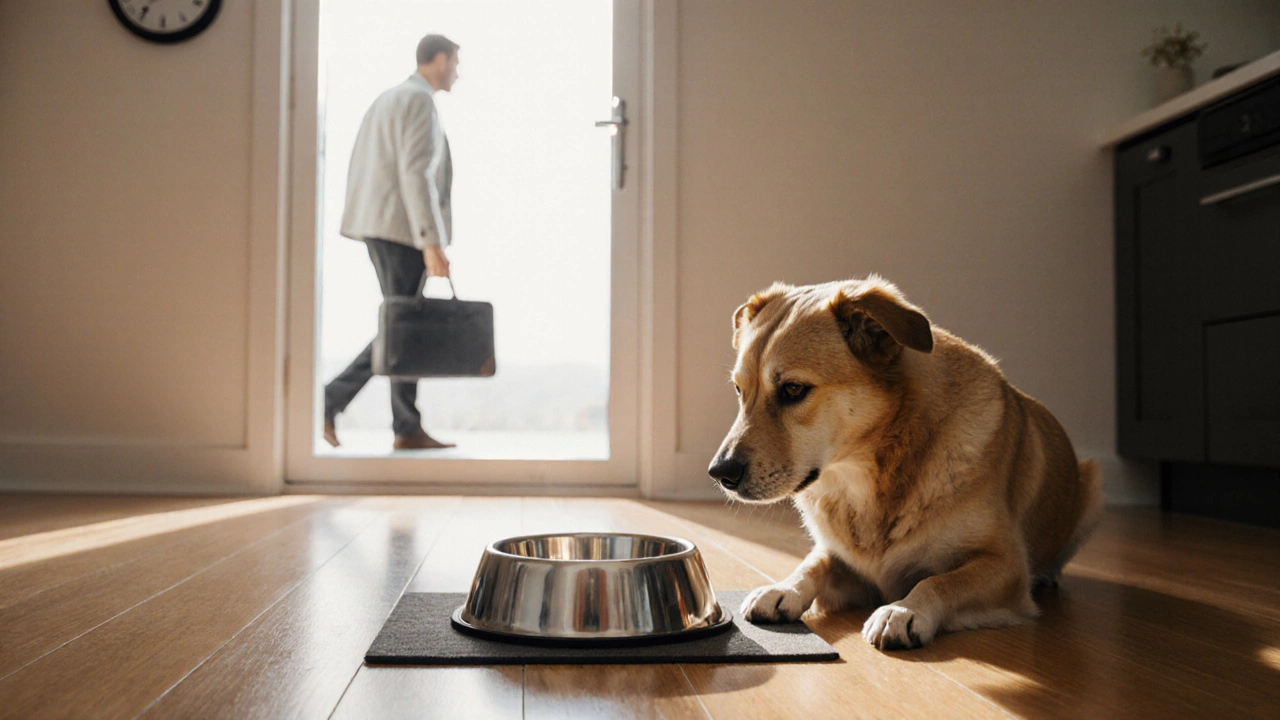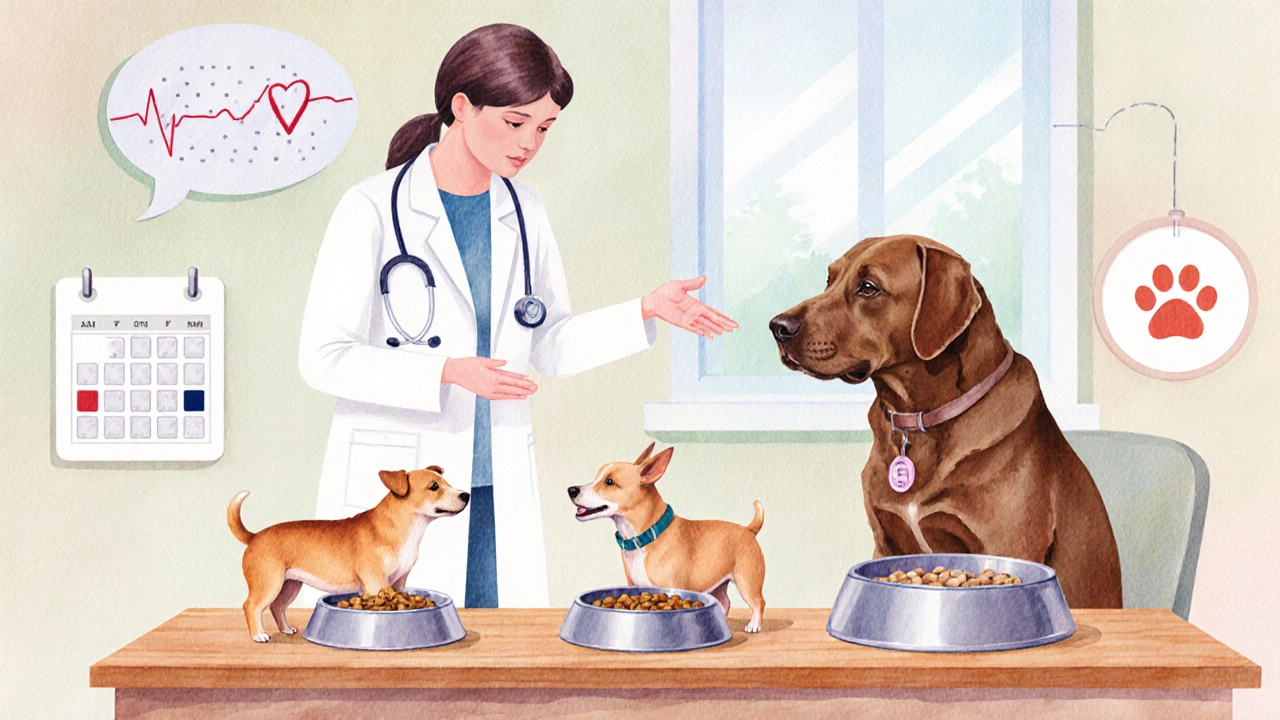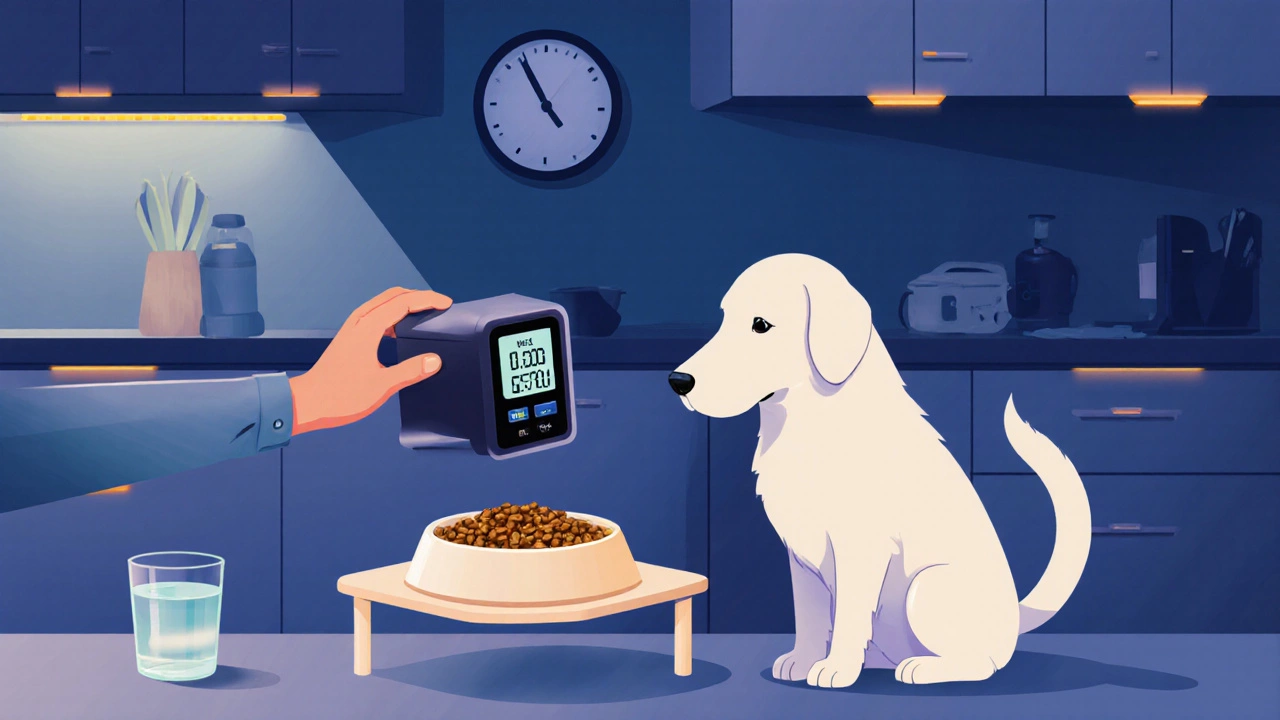
Dog Feeding Frequency Calculator
Your Dog's Details
Feeding Recommendation
Please enter your dog's details to see the recommendation
Ever caught yourself wondering if feeding your dog only once a day is enough? It’s a common question, especially when busy schedules make multiple meals feel like a hassle. The short answer is: it depends on your dog’s age, size, activity level, and health. Below we break down what the science says, weigh the pros and cons, and give you a step‑by‑step plan to decide if a once a day dog diet fits your furry friend.
What is Dog Feeding Frequency?
Dog Feeding Frequency refers to how many times a day a dog receives food. Veterinarians and nutrition experts use this term to tailor meals to a dog’s metabolic rate, digestive health, and lifestyle. While wolves in the wild may graze throughout the day, domestic dogs have more flexible schedules.
Key Factors That Influence How Often a Dog Should Eat
- Dog Nutrition is the foundation. Proper protein, fat, fiber, and micronutrient balances are needed regardless of meal count.
- Age - Adult Dog versus Puppy. Puppies need more frequent meals to support rapid growth.
- Size - Small breeds have faster metabolisms and may prefer two or three meals, while large, low‑energy dogs can often handle a single meal.
- Activity level - Working or highly active dogs burn more calories and may need additional feeding windows.
- Health conditions - Dogs with diabetes, gastrointestinal issues, or certain endocrine disorders often require spaced meals.
Pros of Feeding Once a Day
When the right dog gets a single daily meal, owners often notice a few benefits:
- Convenience: One clear feeding window fits a busy routine.
- Better weight control: A single calibrated portion reduces the chance of accidental over‑feeding.
- Improved digestion for some dogs: A larger, less frequent meal can give the Digestive System more time to process food, potentially lowering gas and stool frequency.
- Routine stability: Dogs thrive on predictable patterns; a set dinner time can become a calming ritual.
Potential Drawbacks
Skipping meals isn’t risk‑free. Here are the pitfalls to watch for:
- Low blood sugar, especially in small or active breeds, can cause weakness or fainting.
- Gastric torsion (bloat) risk may increase if a large dog eats a massive meal quickly. Slow‑feed bowls help, but the risk remains.
- Behavioural changes: Hunger can trigger barking, pacing, or resource‑guarding.
- Limited nutrient absorption window: Some nutrients, like certain vitamins, are better absorbed when spread across meals.

Choosing the Right Feeding Schedule for Your Dog
Ask yourself these quick questions before committing to a one‑meal plan:
- Is your dog an Adult Dog over a year old?
- Does it weigh under 20 lb or over 70 lb? (Size matters.)
- Is it mostly sedentary, moderately active, or a working breed?
- Any chronic health issues? A quick chat with your Veterinarian can clarify.
- What type of food are you using - Commercial Dog Food, raw, or homemade?
If the answers line up with a stable adult, average size, moderate activity, and no special medical needs, a once‑daily approach can work.
How to Build a One‑Meal Plan
Follow these steps to make sure your dog gets balanced nutrition in a single portion:
- Calculate daily caloric needs. A simple formula: Resting Energy Requirement (RER) = 70 × (body weight in kg)^0.75. Multiply RER by 1.2‑1.8 depending on activity.
- Select a high‑quality Commercial Dog Food that meets AAFCO standards for your dog’s life stage.
- If you prefer homemade meals, ensure they contain 25‑30% protein, 10‑15% fat, and adequate calcium/phosphorus. Consulting a pet‑nutritionist is wise.
- Divide the calculated calories into one bowl. Use a kitchen scale for accuracy.
- Serve at the same time each day, preferably early evening, and give at least 30 minutes to finish.
- Provide fresh water at all times - a key factor for digestion.
Monitoring Your Dog’s Response
After switching to a single meal, keep an eye on these signs for the first two weeks:
- Weight stability - a fluctuation of ±5 % is normal; more indicates a problem.
- Energy levels - lethargy or hyper‑activity can signal under‑ or over‑feeding.
- Stool quality - firm, well‑formed stools suggest good digestion; diarrhea or constipation means adjustments are needed.
- Behavior around feeding time - anxiety or aggression may need a slower feeding method or a split meal.
If any red flags appear, consider adding a small morning snack or consulting your vet.

Comparison: Once‑Daily vs Multiple Meals
| Meal Count | Typical Benefits | Typical Drawbacks | Best Suited For |
|---|---|---|---|
| Once a Day | Convenient, easier portion control, can aid weight management | Risk of low blood sugar, possible bloat in large breeds, may trigger hunger‑related behaviors | Adult, medium‑to‑large breeds, low/moderate activity, no metabolic disorders |
| Twice a Day | More stable blood glucose, reduced bloat risk, fits most adult dogs | Requires two feeding windows, slight chance of over‑feeding if portions aren’t measured | Most adult dogs, especially active or large breeds |
| Three+ Times (Puppies/Highly Active) | Supports rapid growth, maintains energy throughout the day | Higher scheduling demand, risk of over‑feeding if not careful | Puppies, working dogs, high‑energy breeds |
Quick Checklist Before You Switch
- Confirm your dog is an adult without special health issues.
- Calculate daily calorie needs accurately.
- Choose a balanced, AAFCO‑approved food source.
- Set a consistent evening feeding time.
- Monitor weight, energy, stool, and behavior for two weeks.
- Have a backup plan (morning snack) if blood sugar drops.
Frequently Asked Questions
Can senior dogs eat once a day?
Many senior dogs can handle a single meal if they’re stable in weight and have no dental issues. However, because older dogs sometimes have slower metabolism and lower stomach capacity, splitting the portion into two smaller meals may improve comfort and nutrient absorption. A quick vet check is advisable.
What’s the best bowl to prevent bloat?
A slow‑feed bowl with raised ridges encourages the dog to eat more slowly, reducing the chance of gulping large amounts of air. Ceramic or stainless‑steel materials are safe and easy to clean.
Should I adjust the calorie count when switching to one meal?
The total daily calories stay the same; you only consolidate them into one portion. However, account for any treats you give throughout the day and subtract those calories from the main meal.
Is a raw diet compatible with once‑daily feeding?
Yes, but raw meals are calorie‑dense, so precise weighing is crucial. Ensure the diet meets AAFCO nutrient profiles and consider a supplement for calcium if you’re feeding muscle meat only.
My dog gets anxious when I leave the bowl empty. Any tips?
Try a timed feeder that releases a small portion after a short interval, or give a low‑calorie chew toy to keep them occupied. Gradual desensitization-leaving the bowl empty for a few seconds and rewarding calm behavior-can also help.



